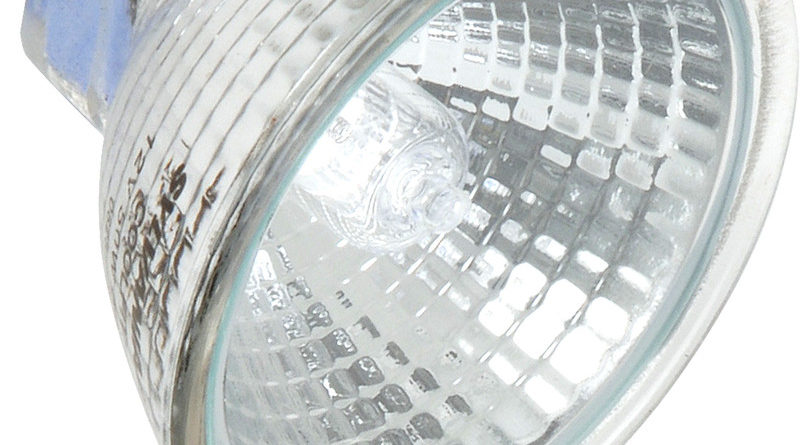HALOGEN LAMP | An Architect Explains
Halogens are Incandescent Lamps where the tungsten filament is enclosed in a transparent glass envelope, filled with an inert gas and a small amount of Halogen gas (Chlorine, Bromine, Fluorine or Iodine) thus enabling it to produce a larger amount of light and have a significantly longer life, since the halogen causes the tungsten vapour to re-condense back on the filament. In normal incandescents, the tungsten evaporating from the hot filament condenses on the cooler inside bulb wall, causing the bulb to blacken. This blackening process continuously reduces the light out-put over the life of the lamp.

Halogen bulbs thus produce light that is whiter and brighter, use less energy, and last longer than standard incandescent bulbs of the same wattage. To help you in deciding the suitability of using Halogen lamps in your home, as an Architect, I have listed their advantages, disadvantages and usage under the following headings:
What are the advantages of Halogen lamps?
What are the disadvantages of Halogen lamps?
Where are Halogen lamps used?
Are Halogens on their way out?
Unique way of using Halogen lamps?
WHAT ARE THE ADVANTAGES OF HALOGENS OVER OTHER LAMP TYPES?
Availability and Cost: They are easily available and do not cost much – Rs50 to Rs 300, depending on the optics, colour and filters.
Wattage: Most halogen lamps range in power from 20-2,000 watts. Low voltage types range from 4-150 watts.
Variety: In the dichroic version, they are available in different colour temperatures and beam angles which make them an ideal choice for lighting art and residential Interiors.
Color rendering: They have perfect colour rendering (Ra-100) that causes object colours to appear almost the same as in natural daylight.
Control: They can be dimmed easily, by simply varying input voltage.
Light Therapy: As part of a polar light therapy, they are known to treat some skin condition and promote tissue healing.

WHAT ARE THE DISADVANTAGES OF HALOGENS?
Luminous Efficacy: The Luminous Efficacy is quite low- at best around 30 lumens per watt.
Life: The Lifetime is also quite low compared to other lamps – 2000 to 4000 hours. They burn out without warning and need regular replacement.
Replacement: Replacing a halogen bulb is a very delicate operation. You cannot smudge it with your fingertips because the slight deposit of grease will burn from the too high heat resulting in the speedy loss of the bulb.
Heat: Halogens are hot and piercingly bright; They produce a significant amount of heat in a room and are a fire threat.
WHERE ARE HALOGENS USED?
Halogens were first used in the late 1960s in motion-picture production.
Automobile headlights, underwater photography: Today, halogen lamps are used in automobile headlights, underwater photography, and in retail applications for display lighting.
Spotlighting and floodlights: Since, Halogens provide a very even and vibrant light, have perfect colour-rendering properties and the light is directed sharply to an object, they are used predominantly for warm spotlighting, interior recessed, track lighting, exterior floodlights and security lighting.
Not ideal for residential lighting: However, since their light is narrowly directed with a sharply defined edge you need too many of them to properly light a room. And halogens produce heat at the adaptor or transformer which is a significant, though somewhat hidden heat output. Hence they are not ideal for general residential lighting.

ARE HALOGENS ON THEIR WAY OUT?
Because of the poor efficacy, they cannot be considered energy efficient light sources. Hence there is the fear that they may become a casualty soon. But, I hope lighting companies continue their efforts to make these halogens more efficient, so that they can be used for their unique advantages.
UNIQUE WAY OF USING HALOGEN LAMPS:
Using a halogen lamp and window film the young designer Yodo Kurosawa obtained a beautiful effect that he calls the Reflector Lamp. When the lamp is turned on, the film reflects the light to the ceiling, replacing a mirror surface and also being a protective cover for the halogen lamp (when turned off).

For general room lighting you should consider compact fluorescent bulbs (CFLs) instead. They last longer, are cheaper to run and produce much less heat. Learn more about Compact Fluorescent Lamps here:
Related Topics:
If you found this post useful, all it takes is a simple click on the “pin it” “like,” “share,” “tweet,” or Google+ buttons below the post. Thank you!


